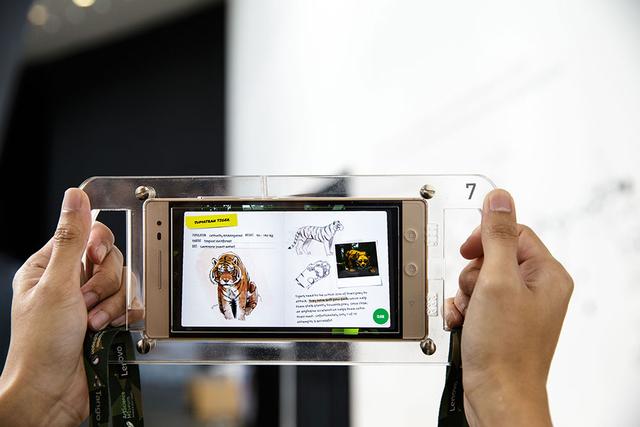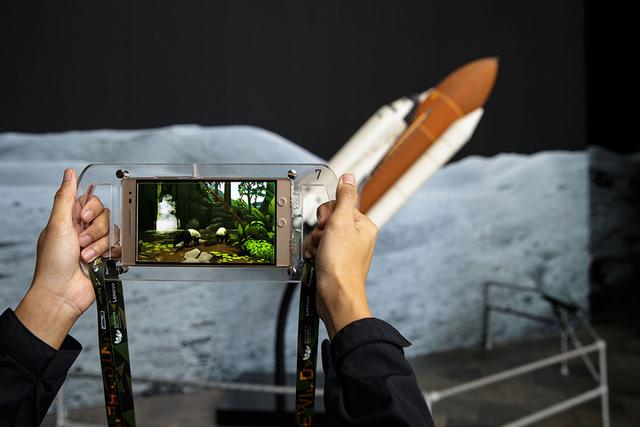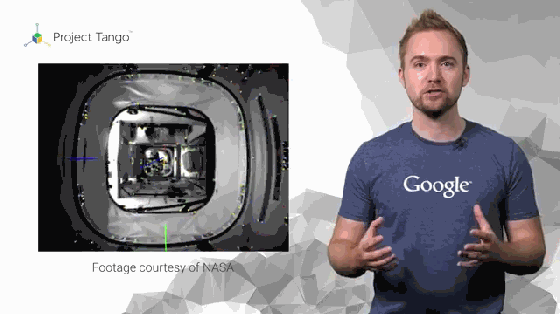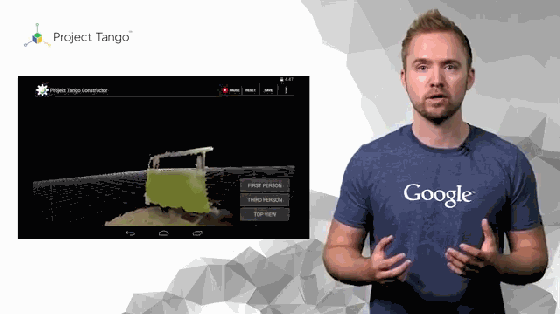Recently, Google, Lenovo, World Wide Fund for Nature, and famous Singaporean artist Brian Ghthong Tan joined forces to create a virtual field covering more than 1,000 square meters in Singapore’s local Art and Science Museum with the help of Panasonic and Qualcomm Technology Alliance. Adventure experience hall. This experience uses the Phab 2 Pro smartphone, the first Google Tango project platform smartphone released by Lenovo in June 2016.


It is reported that this virtual experience hall is divided into five different scenarios. Each scene's adventure is designed to save different endangered wild animals. At the same time, WWF added virtual vegetation to the different scenes of the species, simulating vegetation from the rainforests of Indonesia.
The initial inspiration for this concept came from Google Zoo, a digital platform created by Google’s innovative think tanks and virtual reality technology, and also won the MediaMonks Award. And all the project participating partners have implemented a principle that is to let all people experience the feeling of being truly in the wild.
Experience method

Visitors first used Lenovo’s Phab 2 Pro smartphone to use the built-in Project Tango technology to begin this VR trip in basement 2 of the Museum of Arts and Sciences, and visitors will first save the endangered in the virtual South Asian rainforest. Animals, and still face many challenges.
In different scenarios, visitors need to simulate the rescue of five kinds of wild animals such as pangolins, pelicans, orangutidae, orangutans and tigers in Southeast Asia. They will also take various actions to protect the environment.
In the final journey, visitors can also enter the tropical rainforest region of Southeast Asia, receive the mission from the World Wildlife Fund, plant the endangered plants in the Rimbang Baling area, and finally complete the mission of saving the Sumatran Tigers in the Sumatra primeval forest.
The virtual reality tour of the field scene also incorporates realistic movie scenes, and the movie scene was performed by the famous Singapore film producer Brian Gothong Tan. Brian Gothong Tan's film first described the very fragile survival conditions of the five endangered species, including the above-mentioned hornbill, badger, mule family, orangutan, and Southeast Asian tiger. In the movie scene, it describes the process of emergence, destruction, and rebirth of the five kinds of creatures, and integrates the real-world scene of Southeast Asian forests in the scene.
technology

Lenovo officially announced the Phab 2 Pro smartphone in San Francisco in June 2016, which is also the world’s first Google Tango platform smartphone with a built-in Qualcomm Snapdragon 652 processor and three functional camera modules to help render Google, Qualcomm and Lenovo have jointly realized augmented reality content.
Simply put, the Tango project includes motion tracking, area learning, and depth perception systems.

First, the motion tracking feature can help the device to understand its unknown and state in the environment by using accelerometers, gyroscopes, and fisheye lenses to get real-time 3D motion information for mobile devices.

And regional learning is used to preserve the 3D data of the surrounding environment into the image, and this technology is to memorize the characteristics of key scenes such as corners and edges. Then based on this information, Tango technology can improve the accuracy of motion tracking by using "sailor navigation".

Finally, the depth perception system is used to perceive the distance between the camera and the target at a specific time. This is similar to the principle of the Microsoft Xbox Kinect and infrared sensors. It can measure the distance of the depth sensor on the Z-axis plane by combining motion tracking.
In this simulated field environment, augmented reality content is achieved through 3D effects, and a unified engine is used, and a 60fps/1080p resolution virtual reality experience is provided, so that it can be guaranteed to be experienced in a midrange configuration smartphone. A good experience. At present, most users use 1080p resolution, and the burden on the GPU is 2.07 million pixels. Therefore, if the original resolution is set at 3.68 million pixels, PC games will not be smooth enough. According to Valve's statistics, the current ratio of all users using QHD resolution is only 1.83%, while the 4K Ultra HD resolution is only 0.22%.
Creative Led Display,Creative Led Screen,Creative Stage Led Display,Platform Creative Led Display
ShenZhen Megagem Tech Co.,Ltd , https://www.megleddisplay.com
